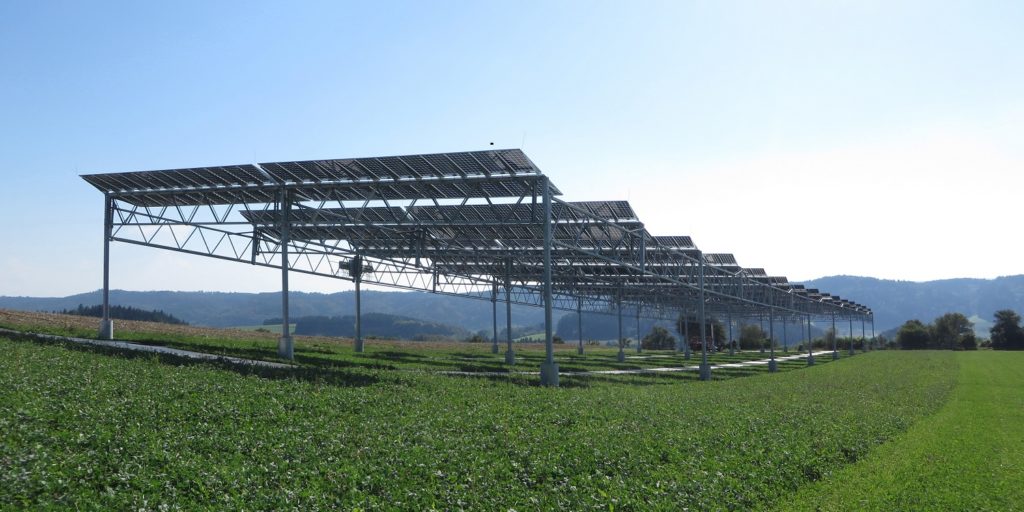Germany’s solar energy research center, the Fraunhofer ISE, has provided new data from its Agrophotovoltaics – Resource Efficient Land Use project, which show how combining solar generation and agriculture is significantly raising land use efficiency.
The institute says land use efficiency at its 194 kW agrophotovoltaic pilot installation near Lake Constance rose 186% per hectare last year – helped by a record-breaking sunny summer. That compared with an efficiency rise of 160% a year earlier.
A solution for arid regions
The institute’s researchers said higher sunlight radiation was responsible for an increase in solar power production and solar irradiation under the PV panels was 30% lower, thus contributing – together with a lower soil temperature and reduced precipitation distribution – to the land use efficiency uptick observed.
“We can assume that the shade under the semi-transparent solar modules enabled the plants to better endure the hot and dry conditions of 2018,” said Fraunhofer ISE agricultural scientist Andrea Ehmann.
Popular content
Although ISE scientists say more testing is needed in arid climates, and with different crops, the researchers added the 2018 results would appear to indicate agrophotovoltaics are a good choice for regions with little rainfall.
Declining costs
The Fraunhofer experts said the costs of agro PV installations may fall further in the near future thanks to economies of scale and learning effects, and that they are already cost competitive with small rooftop solar systems. On the top of that benefit, PV system owners on arable land could see an additional source of income from energy storage, or from the rising use of electric vehicles in agriculture.
The Fraunhofer ISE said it is developing several projects to transfer the technology to developing countries as well as testing it for other applications. “Besides less evaporation and lower temperatures, harvesting … rainwater with PV modules also plays a role,” the institute added.
This content is protected by copyright and may not be reused. If you want to cooperate with us and would like to reuse some of our content, please contact: editors@pv-magazine.com.



Well, if any one suggested this a decade earlier, I am sure he would be branded a knuckle headed joker.
Very appreciative effort. It could bring the solar and clean energy in new level of vaibility even for land scarce country like Bangladesh. This technology needs to promote strongly.